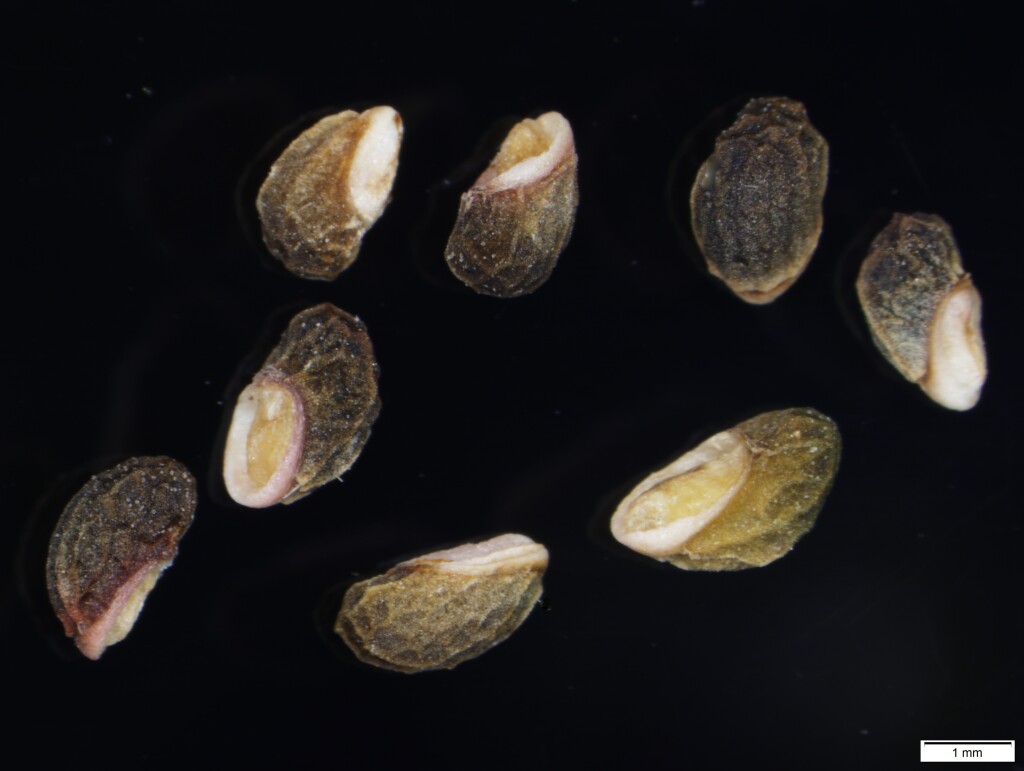Westringia glabra
R.Br. Violet WestringiaShrub 0.5–1 m high. Leaves in whorls of 3 or 4, rarely opposite, narrow-ovate to -elliptic, 12–20(–50) mm long, 3–4(–11) mm wide, length-to-width ratio 4–5.1, both surfaces sparsely to very sparsely hairy or glabrous, margin entire and usually slightly recurved; petiole c. 1 mm long. Bracteoles 1.5–2 mm long. Calyx green, outer surface sparsely hairy (rarely densely hairy), tube 3–3.5 mm long, lobes triangular to narrowly triangular, 3–3.7 mm long, 1–1.5 mm wide, lobe-to-tube ratio 0.9–1.1; corolla 8–10 mm long, pink to pale purple with maroon dots. Flowers throughout the year.
Wim, VVP, GipP, OtP, CVU, GGr, EGL, EGU, HSF, MonT, HFE. Disjunctly distributed in Victoria, in the northern Grampians, Lerderderg Gorge, and more commonly in East Gippsland. Frequently occuring in skeletal soils, often on steep rocky slopes, and often associated with river gorges.
Treated here as a highly variable species. Plants from East Gippsland frequently, perhaps always, have some large leaves that are usually in 4-leaved whorls. While plants with broad leaves and relatively short calyx lobes from Mt Zero, and very narrow-leaved plants from the Lerderderg gorge area have at times been treated as distinct entities.
Conn, B.J. (1999). Lamiaceae. In: Walsh, N.G.; Entwisle, T.J., Flora of Victoria Vol. 4, Cornaceae to Asteraceae, pp. 418–459. Inkata Press, Melbourne.
 Spinning
Spinning
